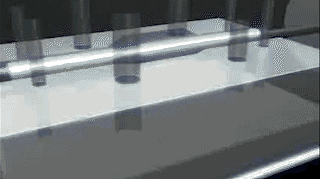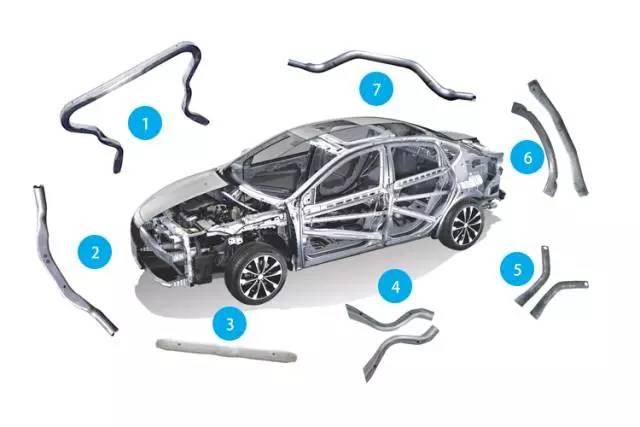

The axis of the inner high-pressure forming part of the sub-frame main body described in this paper is a three-dimensional curve. The section varies along the axis and has 18 sections of different shapes and sizes. The shape includes rectangular section, trapezoidal section, polygonal section, etc., resulting in internal high voltage. During the forming process, the section is unevenly deformed along the circumferential direction, which easily causes wrinkles or cracks. The sub-frame is in the inner high-pressure forming part. The axis of the piece is a three-dimensional curve. The section varies along the axis. It has 18 sections of different shapes and sizes. The shape includes rectangular section, trapezoidal section, polygonal section, etc., resulting in internal high voltage. During the forming process, the section is unevenly deformed along the circumferential direction, which easily causes wrinkles or cracks. In particular, the shape of the corner is complicated, the bending has been reduced, and cracking is particularly likely to occur on the outside. .

Second, the sub-frame main internal pressure forming process and wall thickness distribution:
The pipe used has an outer diameter of 63.5 mm, a wall thickness of 2 mm, a length of 1835 mm, and a pipe volume of 5.1 L. The material is low alloy high strength steel with a yield strength of 390 MPa, a tensile strength of 480 MPa and an elongation of 40%. Main process parameters: When the shaping pressure is 150MPa, the clamping force is 16000kN and the axial force is 428kN. The wall thickness distribution of the whole process (including bending, preforming and hydroforming(internal high pressure forming)) obtained by multi-step numerical simulation is used.
(a) bending; (b) preforming; (c) hydroforming(internal high pressure forming).


The minimum outer wall thickness after bending is 1.64 mm, the thinning rate is 18%; the inner side is thickened, the maximum wall thickness is 2.31 mm, and the thickness is increased by 15.5%. The minimum wall thickness is substantially unchanged after preforming. Wall thickness distribution after hydroforming(internal high pressure forming): The minimum wall thickness is located in the transition zone between the concave and straight sides of the curved fillet as viewed in the axial direction of the member; from the ring direction, the minimum wall thickness is distributed in the rounded corner and straight side of the section Transition zone. The minimum wall thickness is 1.45mm, which is located outside the left corner section. The maximum thinning rate is 27.5%, the maximum wall thickness is 2.30mm, and the maximum thickening rate is 15%. By using the principle of reducing the shaping pressure by the concave pre-formed section, the preforms with different concave sections are designed according to the cross-sectional shape characteristics of the main frame of the sub-frame, which not only ensures the smooth progress of the internal high-pressure forming process, but also effectively The uniformity of the section deformation along the circumferential direction and the distribution of the wall thickness were controlled, and qualified parts were obtained.